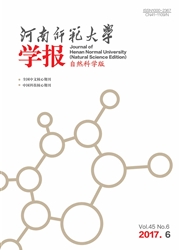

 中文摘要:
中文摘要:
利用LDH活性检测的分子生物学手段结合TEM技术研究金红石型和锐钛矿型纳米TiO2材料对人肺腺癌细胞(A549)的作用及可能的机制.LDH活性检测发现:与对照组相比,金红石型300μg/mL浓度组对细胞膜的损伤最大.TEM显示,在细胞内或周围发现一些纳米TiO2颗粒,但2种晶型纳米TiO2的存在形式有所不同,并且金红石型实验组中,板层体数量明显增多,部分纳米颗粒缠绕于板层体中.这说明,2种晶型纳米TiO2材料对细胞的细胞膜及其它细胞器造成了一定的影响,且纳米TiO2材料的晶体构象不同,引起的毒性效应存在着显著差异
 英文摘要:
英文摘要:
Using the lactate dehydrogenase(LDH) kit and TEM, the potential harm and conceivable mechanism of rutileTiO2, anatase-TiO2 nanoparticles on A549 cells are studied. The acticity of LDH are measured. The results show that the toxicity effects of cell membrane in 300 /μg/mL of rutile-TiO2 group is most significant. The TEM images of cells show that some TiO2 NPs aggregated in cytoplasm and cell membrane around, and there are some obvious differences in the form of two crystal phase TiO2 NPs. At the same time, more lysosomes emerge in rutile group and interact with TiO2 NPs. It is demonstrated that the toxicity effect on the cell membrane, other cell organelle are observed after rutile-TiO2, anatase-TiO2 NPs treatment for 4h, and that there are some distinct differences in cell toxicity.
 同期刊论文项目
同期刊论文项目
 同项目期刊论文
同项目期刊论文
 The calculation of the 140 A MeV (40,48)Ca and (58,64)Ni projectile fragmentation by the statistical
The calculation of the 140 A MeV (40,48)Ca and (58,64)Ni projectile fragmentation by the statistical Systematic behavior in the isospin dependence of projectile fragmentation of mirror nuclei with A=20
Systematic behavior in the isospin dependence of projectile fragmentation of mirror nuclei with A=20 Symmetry energy from neutron-rich fragments in heavy-ion collisions,and its dependence on incident e
Symmetry energy from neutron-rich fragments in heavy-ion collisions,and its dependence on incident e 期刊信息
期刊信息
